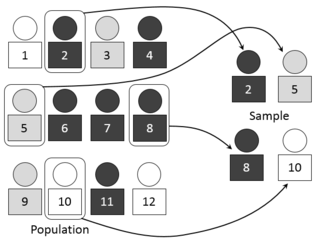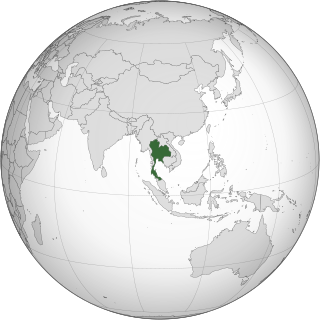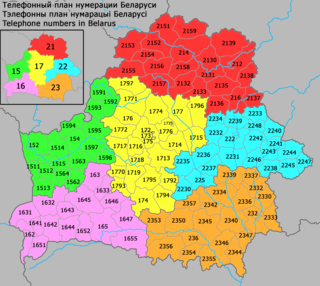Related Research Articles
In statistics, survey sampling describes the process of selecting a sample of elements from a target population to conduct a survey. The term "survey" may refer to many different types or techniques of observation. In survey sampling it most often involves a questionnaire used to measure the characteristics and/or attitudes of people. Different ways of contacting members of a sample once they have been selected is the subject of survey data collection. The purpose of sampling is to reduce the cost and/or the amount of work that it would take to survey the entire target population. A survey that measures the entire target population is called a census. A sample refers to a group or section of a population from which information is to be obtained.

In statistics, quality assurance, and survey methodology, sampling is the selection of a subset or a statistical sample of individuals from within a statistical population to estimate characteristics of the whole population. The subset is meant to reflect the whole population and statisticians attempt to collect samples that are representative of the population. Sampling has lower costs and faster data collection compared to recording data from the entire population, and thus, it can provide insights in cases where it is infeasible to measure an entire population.

The North American Numbering Plan (NANP) is a telephone numbering plan for twenty-five regions in twenty countries, primarily in North America and the Caribbean. This group is historically known as World Zone 1 and has the telephone country code 1. Some North American countries, most notably Mexico, do not participate with the NANP.
A telephone numbering plan is a type of numbering scheme used in telecommunication to assign telephone numbers to subscriber telephones or other telephony endpoints. Telephone numbers are the addresses of participants in a telephone network, reachable by a system of destination code routing. Telephone numbering plans are defined in each of the administrative regions of the public switched telephone network (PSTN) and in private telephone networks.

In the United Kingdom, telephone numbers are administered by the Office of Communications (Ofcom). For this purpose, Ofcom established a telephone numbering plan, known as the National Telephone Numbering Plan, which is the system for assigning telephone numbers to subscriber stations.

The French telephone numbering plan is used in Metropolitan France, French overseas departments and some overseas collectivities.
Ten-digit dialing is a telephone dialing procedure in the countries and territories that are members of the North American Numbering Plan (NANP). It is the practice of including the area code of a telephone number when dialing to initiate a telephone call. When necessary, the ten-digit number may be prefixed with the trunk code 1, which is referred to as 1+10-digit dialing or national format.
Seven-digit dialing is a telephone dialing procedure customary in some territories of the North American Numbering Plan (NANP) for dialing telephone numbers in the same numbering plan area (NPA). NANP telephone numbers consist of ten digits, of which the leading three are the area code. In seven-digit dialing it is not necessary to dial the area code. The procedure is also sometimes known as local format or network format.
In telecommunication, a dial plan establishes the permitted sequences of digits dialed by telephone subscriber and the manner in which a telephone switch interprets these digits within the definitions of the prevailing telephone numbering plan. Dial plans in the public switched telephone network referred to as dialing procedures.

Telephone numbers in Cyprus follow a closed telephone numbering plan which was adopted on 1 December 2001. As a result, for landline phone numbers the digit 2 followed by the old area code was affixed to the subscriber number and for mobile phones 9 was affixed to the phone number. The plan is also used in Akrotiri and Dhekelia.
A feature group, in North American telephone industry jargon, is most commonly used to designate various standard means of access by callers to competitive long-distance services. They defined switching arrangements from local exchange carriers central offices to interexchange carriers. These arrangements were described in an official tariff of the National Exchange Carrier Association, filed with the Federal Communications Commission (FCC).

Gallup, Inc. is an American multinational analytics and advisory company based in Washington, D.C. Founded by George Gallup in 1935, the company became known for its public opinion polls conducted worldwide. Gallup provides analytics and management consulting to organizations globally. In addition the company offers educational consulting, the CliftonStrengths assessment and associated products, and business and management books published by its Gallup Press unit.
Direct telephone connections between Gibraltar and Spain were severed in 1969, when land communications between both territories were halted by the Spanish leader Francisco Franco, and were not restored until 1986. However, Gibraltar experienced restrictions after that date causing problems with its telecommunications system, as a direct result of the Spanish sovereignty claim.
Automated telephone surveys is a systematic collection a data from demography by making calls automatically to the preset list of respondents at the aim of collecting information and gain feedback via the telephone and the internet. Automated surveys are used for customer research purposes by call centres for customer relationship management and performance management purposes. They are also used for political polling, market research and job satisfaction surveying.

Telephone numbers in the Philippines follow an open telephone numbering plan and an open dial plan. Both plans are regulated by the National Telecommunications Commission, an attached agency under the Department of Information and Communications Technology (DICT).

Thailand's telephone numbering plan in Thailand is managed by the National Broadcasting and Telecommunications Commission (NBTC) in accordance with International Telecommunication Union's (ITU) recommendation E.164.

A telephone number is a sequence of digits assigned to a landline telephone subscriber station connected to a telephone line or to a wireless electronic telephony device, such as a radio telephone or a mobile telephone, or to other devices for data transmission via the public switched telephone network (PSTN), or other public and private networks. Modern smart phones have added a built-in layer of abstraction whereby individuals or businesses are saved into a contacts application and the numbers no longer have to be written down or memorized.
The Health Information National Trends Survey (HINTS) is a cross-sectional, nationally representative survey of American adults sponsored by the National Cancer Institute. HINTS provides publicly available data on American adults' knowledge of, attitudes toward, and behaviors related to cancer prevention, control and communication. Researchers use the data to identify trends in health communication, including how people find cancer information, which sources they use, their feelings about the search process, and how they perceive cancer overall.

Belarus began using its own country code +375 in 1995, replacing the +7 international country code inherited from the Soviet Union. The local numbering plan was inherited from the Soviet Union and remains with few changes.

Joseph Waksberg was an American statistician. While at the United States Census Bureau and Westat, he developed methods for area sampling and telephone sampling and made contributions in many areas of surveys and censuses.
References
- ↑ Donald P. Green; Alan S. Gerber (2002-05-05). "Enough Already with Random Digit Dialing: A Proposal to Use Registration-Based Sampling to Improve Pre-Election Polling" (PDF).
{{cite journal}}: Cite journal requires|journal=(help) - ↑ Sara H. Olson; Jennifer L. Kelsey; et al. (1992-01-15). "Evaluation of Random Digit Dialing as a Method of Control Selection in Case–Control Studies". Archived from the original on 2007-03-22.
{{cite journal}}: Cite journal requires|journal=(help)